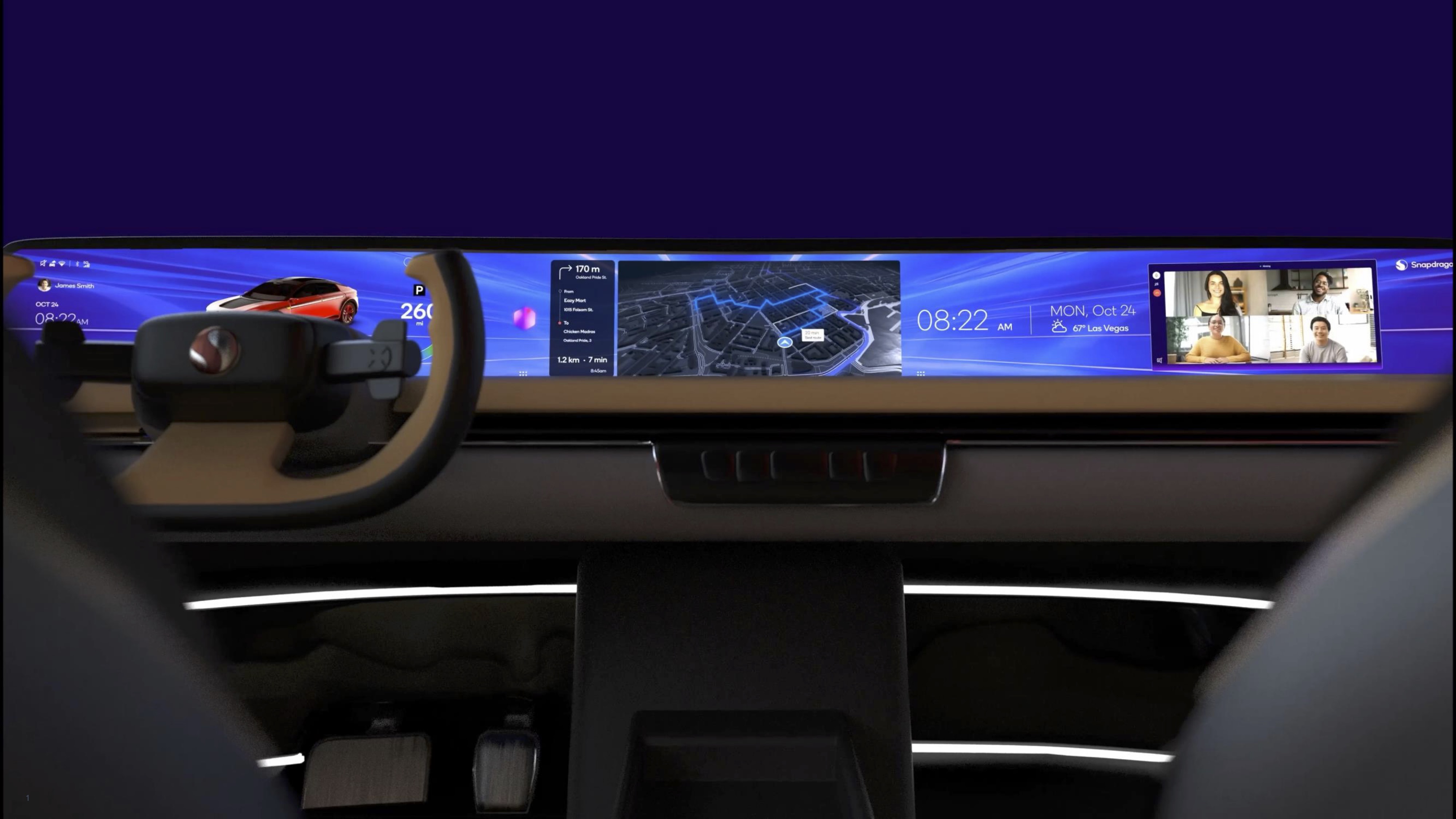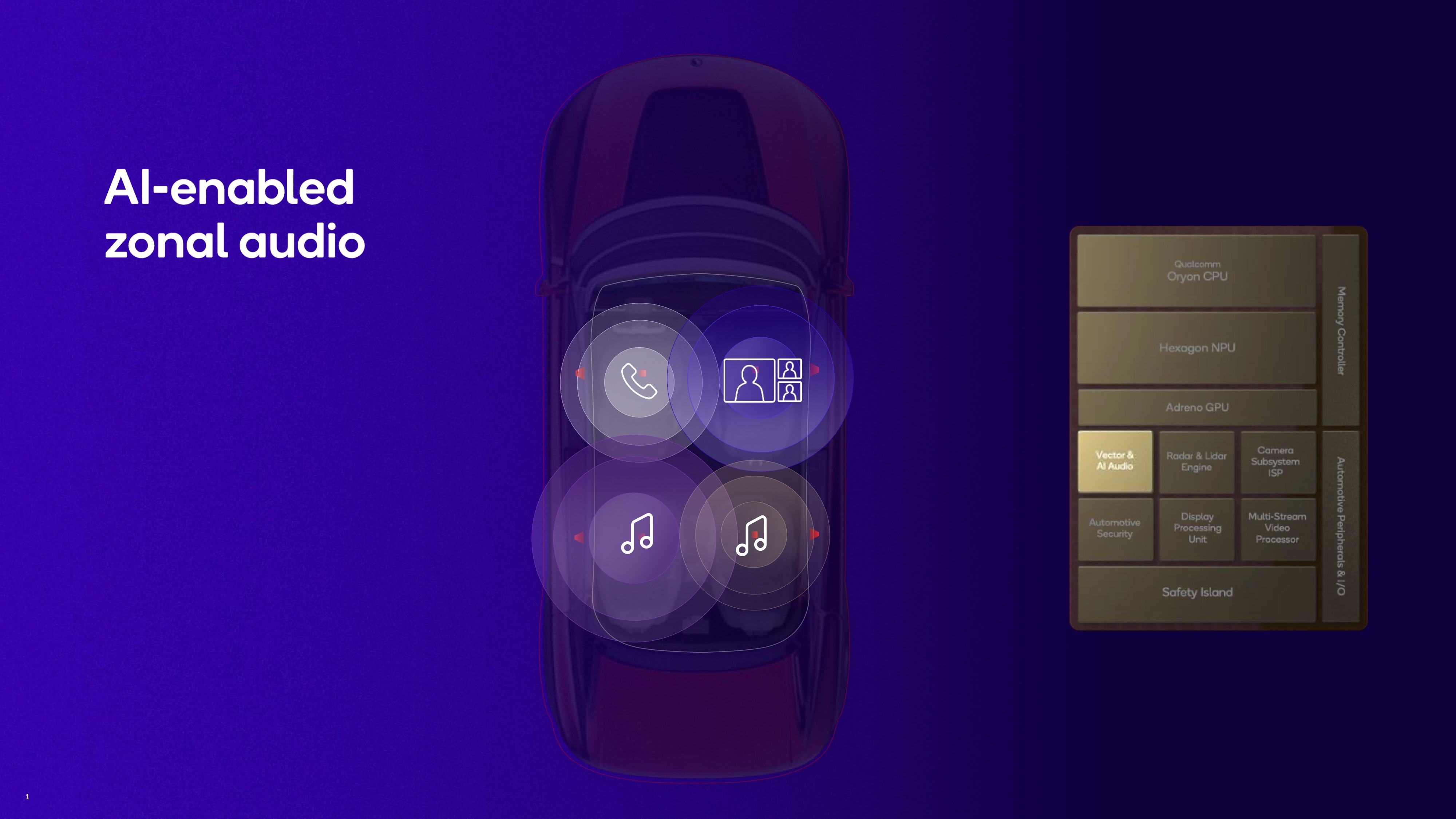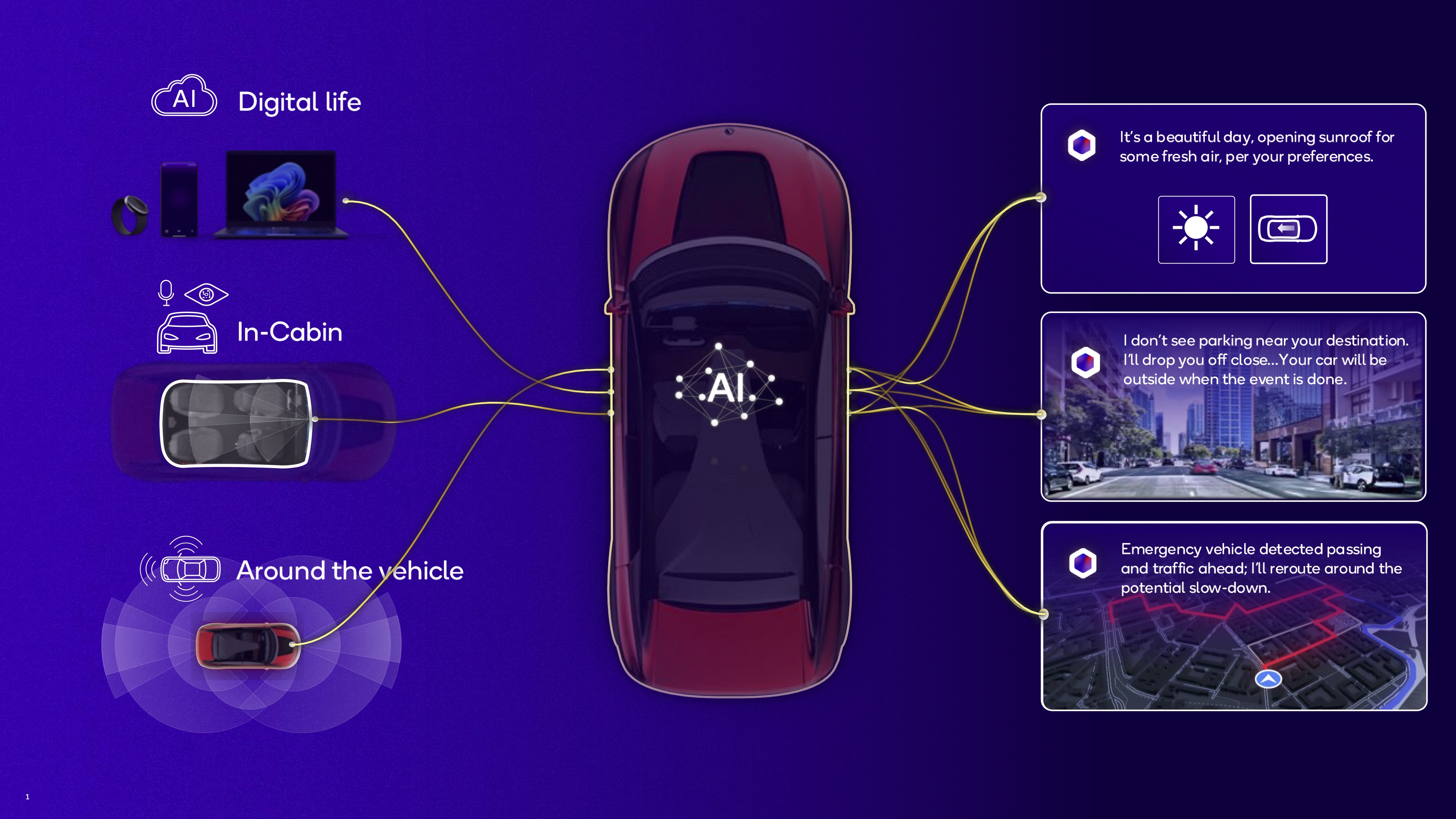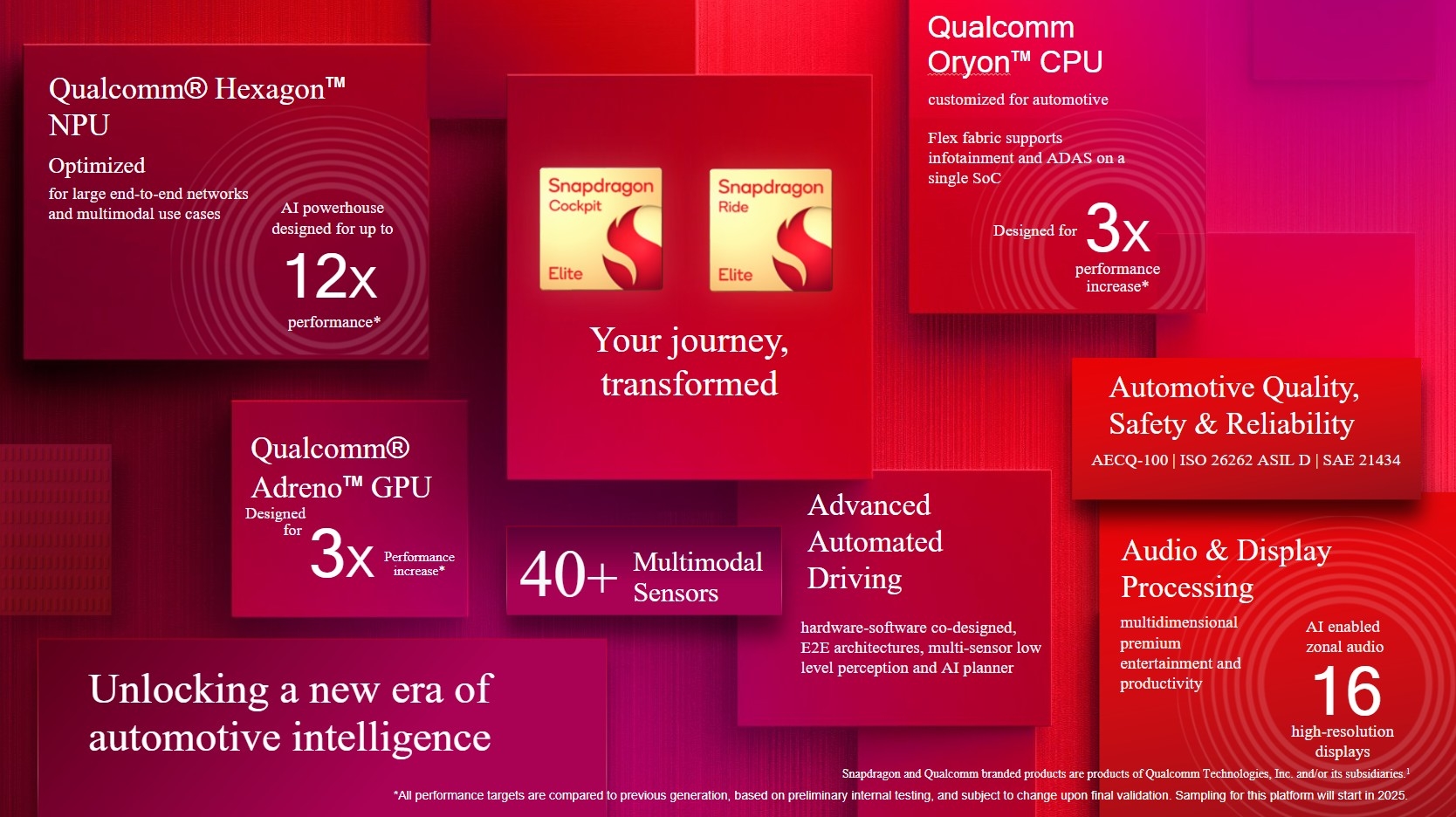
What you need to know
- Qualcomm announced new Cockpit Elite and Ride Elite platforms with Oryon CPU tech and 3X/ 12X CPU and AI performance over previous versions.
- Snapdragon Cockpit Elite enables AI tricks like an LLM assistant trained on the car manual and zonal audio.
- Ride Elite supports up to 40 cameras and sensors at once for self-driving cars, plus behavior-learning tech to take automatic actions based on your preferences.
Whether or not you have any interest in owning or riding in a self-driving car, Qualcomm says that its automaker clients want to pack their cars with more AI technology. With its new Snapdragon Cockpit Elite and Ride Elite, the company is promising ambitious, futuristic AI capabilities that hover between exciting and science-fiction.
Available starting in 2025, the 2nd-gen Cockpit Elite uses the same Oryon CPU tech found in its new Snapdragon 8 Elite CPUs—which were announced yesterday at the Qualcomm Summit—with 3X the CPU performance of the last Snapdragon Cockpit. It also sports a Hexagon NPU with 12X-boosted AI and an Adreno GPU capable of supporting an absurd 16 4K displays simultaneously in one car, as well as "real-time ray tracing" and "immersive 3D experiences" for "critical visual information."
I asked the Qualcomm team why any car would need that much graphical power; they explained that this allows your car's infotainment display to span the entire front dashboard while still leaving processing power for TVs on seatbacks for passengers and graphical augmentations on your side mirrors.
Presumably, non-autonomous vehicles wouldn't need as many distracting screens, but luxury automakers would have that option.

The boosted CPU supports simultaneous tasks like navigation, music, calling, and gaming simultaneously. But the flashy star of Cockpit Elite, unsurprisingly, is the AI tech.
Qualcomm says its Hexagon NPU is "built to handle Large Language Models (LLMs) with billions of parameters." Each car's specific hands-free assistant would be trained on the car's manual so you could, for example, ask what a warning light means.
Snapdragon Cockpit Elite would also "learn and adapt to your preferences," Qualcomm claims, and even "take actions automatically." This part of the presentation felt looser on hard details; I asked what exact preferences the AI could learn, and heard examples like your car routing you home without your input if you usually do so at that time. It could also recognize which backup route you like to take during heavy traffic, or guide another driver (like your spouse) towards your usual parking spot.
In addition, Snapdragon Elite would recognize the number of passengers and change its usual patterns accordingly, like preventing phone notifications if someone else could hear them or using "zonal audio" to localize relevant audio to the driver while focusing on music for the passengers.

Qualcomm also announced the Snapdragon Ride Elite, which essentially pairs with Cockpit Elite as a single SoC for self-driving cars.
Ride Elite supports up to 40 sensors, including multiple 16MP cameras with 360º FoV and passenger-facing infrared cameras. It's meant to capture signs, lanes, and objects clearly, as well as recognize passenger gestures.
It simultaneously supports radar/lidar point-cloud processing, automotive security when parked, and other behavioral AI tricks like auto-rerouting around accidents, self-guided parking, and opening your sunroof depending on the weather.

All combined, the Qualcomm Snapdragon Cockpit Elite and Ride Elite seem to promise smarts that are good enough to power the talking AI car from Knight Rider. We'll have to see how much a powerful SoC like this costs, both for automakers and for consumers, and whether the ambitious AI promises actually lead to helpful automation for drivers.







